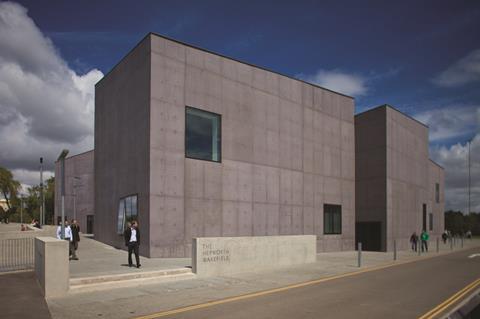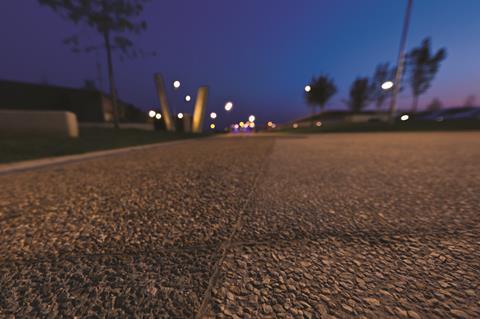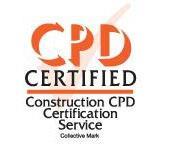The first of our CPD modules for 2012 looks at innovations in concrete, from aesthetics to sustainability.
This module is sponsored by Lafarge

How to take this module
To take this module read the technical article below and click through to a multiple-choice questionnaire, once taken you will receive your results and if you successfully pass you will be issued automatically with a certificate to print for your records.
Free continuing professional development distance learning programme is open to everyone who wants to develop and improve their professional knowledge.
These modules can contribute to your annual CPD activity and help you maintain membership of professional institutions and bodies.
To gain your CPD credits, read the text and answer the questions - details of how to enter online coming soon.
Each of these modules will contribute 1 hour towards your CPD obligations.
Introduction
Concrete has been an important construction material since Roman times. Its appeal has endured for a number of reasons, not least its compressive strength and resilience to weather and fire. In recent years, attention has also turned to its high thermal mass, which can be used instead of mechanical heating and ventilation to level out the indoor temperature when the external temperature undergoes variations. This makes concrete a vital material in the drive to create a low-carbon built environment.
Recent innovations have further improved concrete’s sustainability credentials - by reducing the amount of material needed in a structure, for example, or the energy embodied in the production of cement. Other innovations, meanwhile, have boosted concrete’s performance and aesthetics and have helped to make the construction process quicker and less expensive. This CPD module will consider these recent developments.

Visual concrete
High-profile developments such as the Hepworth Wakefield art gallery (pictured), designed by David Chipperfield, demonstrate the strides made in recent years in the aesthetic use of concrete. Exposed aggregate is increasingly popular, and modern concretes now come in a variety of textures and effects. They can also be coloured, so the finish doesn’t fade or wear away. Decorative concrete finishes can be more cost-effective than traditional hard landscaping finishes. An example is the relative price of resin-bound solutions in comparison with exposed aggregate. Exposed aggregate concrete is also more durable.
Another development that has led to more creative use of concrete is the emergence of self-compacting concrete (SCC) - as used on the Hepworth gallery. SCC is a fluid concrete that can replicate the shape of complicated formwork, and flow though congested reinforcement and fully compact without the need for mechanical vibration compaction. This enables more intricate designs and higher quality finishes with reduced remedial works where traditional concrete might leave flaws and “blow holes”. SCC has benefits beyond its aesthetic qualities:
- Its fluid nature means that it can flow freely around congested steel reinforcement
- By removing the need for compaction equipment, it reduces the placing time, and can allow greater reuse of formwork as there is less damage to facings
- It eliminates the risk of vibration white finger and reduces noise pollution
- Fully compacted concrete leads to better structural integrity.
Insulating concrete formwork
Another significant innovation in concrete technology is insulating concrete formwork (ICF), a building system that uses expanded (or extruded) polystyrene formwork to create an in-situ concrete structure. ICF produces solid masonry walls that do not need a cavity, and the formwork is left permanently in place as thermal insulation.
ICF is installed using either a panel or a block system. A panel system consists of a series of rails and cross ties that fit together around insulating panels of polystyrene to create a hollow core of formwork. Concrete is then placed into the formwork either by pump or skip using a reduction nozzle. Panel systems are commonly used in basement construction. Block systems are comprised of open-ended, hollow polystyrene blocks, which fit tightly together to form a shuttering system. The concrete is poured into the hollow space to form a continuous wall, which supports the structural loads from floors and roof. The advantages of ICF include:
- Speed One storey is achievable per pour, working in layers around the perimeter. It is possible to cast floors and wall together with some systems. The walls of a three-bedroom bungalow, including concrete pour, can be completed in one day
- Energy efficiency The combination of the expanded polystyrene insulation and in-situ concrete produces a robust building with a U-value of under 0.20 W/m2K, well below the current requirement contained in Part L of the Building Regulations
- Appearance ICF can be used with a variety of external finishes. A traditional brick appearance can be created by using brick slips either on a carrier backing, or bonded directly to the formwork. Full bricks may also be used with or without a cavity.
Jointless concrete
Jointless concrete has controlled shrinkage, which means that saw cuts can be placed up to 20m x 20m apart. Its shrinkage value is 250 to 350 micrometres per metre ( m/m) at 56 days (at a temperature of 20ºC and 60% relative humidity). It offers an alternative to steel-mesh and steel-fibred floors in industrial, retail and commercial applications and is laid by traditional methods - surface vibration is mandatory, either with a laser screed or vibrating beam.
A typical jointless concrete has a compressive strength of 20N/mm2 after one day; 50N/mm2 after seven days; and 70N/mm2 after 28 days. Its flexural strength is 6N after 28 days. This offers a number of advantages over traditional flooring:
- Thinner sections offer greater flexibility to designers and are easier to install. For a typical jointless concrete, groundbearing slabs need a minimum thickness of 150mm; overlay slabs need a minimum thickness of 100mm
- Jointless concrete doesn’t require the addition of any steel on groundbearing slabs, which brings costs down and removes the possibility of corrosion - structural steel within groundbearing and suspended slabs cannot be removed
- Loads can be applied at 14 days, potentially reducing the construction programme
- It produces a highly durable surface, which reduces maintenance costs
- The reduction in the amount of material needed also has obvious environmental benefits. A report by PriceWaterhouseCoopers, Sustainable Business Solutions, found that a typical jointless floor slab was responsible for producing 20% less CO2 than traditional concrete with steel mesh or steel fibres.

Sustainability: Reduced-carbon cements
Cement is an essential binding ingredient in concrete, but its production has traditionally been energy-intensive. Increasingly, reduced-carbon cements are produced using by-products from other industries that cannot be used elsewhere, reducing their embodied energy. These components are mixed with traditional Portland cement or Portland cement clinker. There are three main types of reduced-carbon cement:
- Portland fly ash cement Fly ash is also referred to as fuel ash or pulverised fuel ash (PFA). It is the fine ash produced when coal is burnt at high temperatures and pressures. Portland fly ash cement is specified by BS EN 197-1 and is divided into two types containing 6-20% and 21-35% of siliceous fly ash respectively. Each tonne of fly ash re-used in cementitious products saves on average 900kg of CO2 emissions. The benefits of fly ash as a cement enhancer include increased strength and durability, improved pumpability and less shrinkage
- Portland-limestone cement Limestone is a readily available raw material throughout the world. Interground with Portland cement clinker, it performs similarly to traditional Portland cement, but is paler in colour. As with Portland fly ash cement, BS EN 197-1 divides Portland-limestone cements into two types, containing 6-20% and 21-35% limestone fines respectively
- Blast-furnace cement Ground-granulated blast-furnace slag (GGBS) is a by-product of iron production. Iron ore, coke and limestone are fed into the furnaces and the iron ore is converted into molten iron that sinks to the bottom. The remaining materials form a slag that floats on top. The slag is rapidly quenched in water, producing glassy granules. These are then dried and ground to a fineness similar to that of Portland cement. The ground slag is then blended with Portland cement or ground clinker and gypsum to produce the final cement. BS EN 197-1 specifies three types of GGBS, containing 36-65%, 66-80% and 81-95% slag respectively. Replacing one tonne of traditional cement with one tonne of GGBS reduces CO2 emissions by about 90%. The benefits of GGBS include improved workability and a lighter colour.
To take this module read the technical article below and click through to a multiple-choice questionnaire, once taken you will receive your results and if you successfully pass you will be issued automatically with a certificate to print for your records.
Company name: Lafarge
Website: www.lafarge.co.uk
World leader in building materials, Lafarge extracts resources from the heart of the earth to make materials to bring to the heart of life. Present in 78 countries, the Group responds to the world’s demand for housing and infrastructure. Lafarge is driven by the needs of its customers, shareholders, local communities and architects. The Group creates specialist solutions which encourage creativity whilst leaving a lighter trace on the world.
















